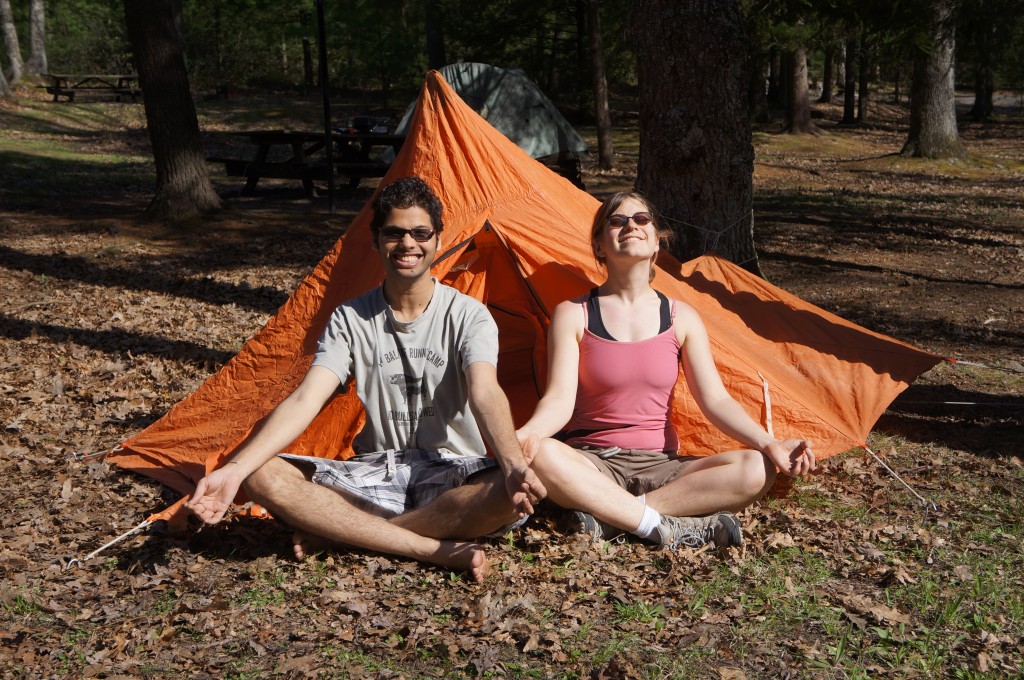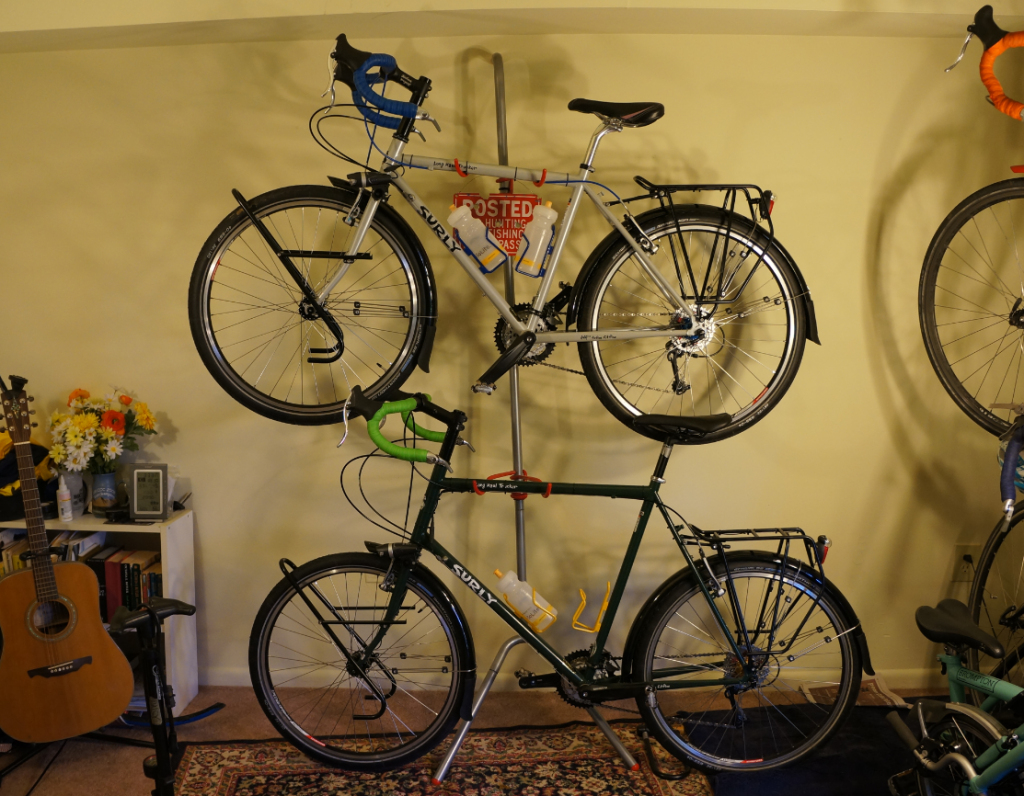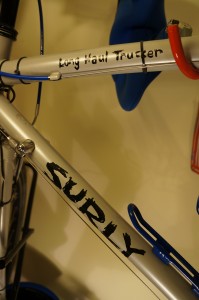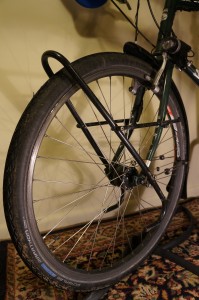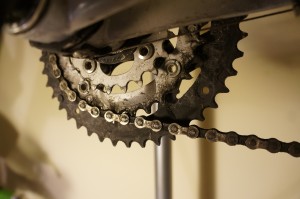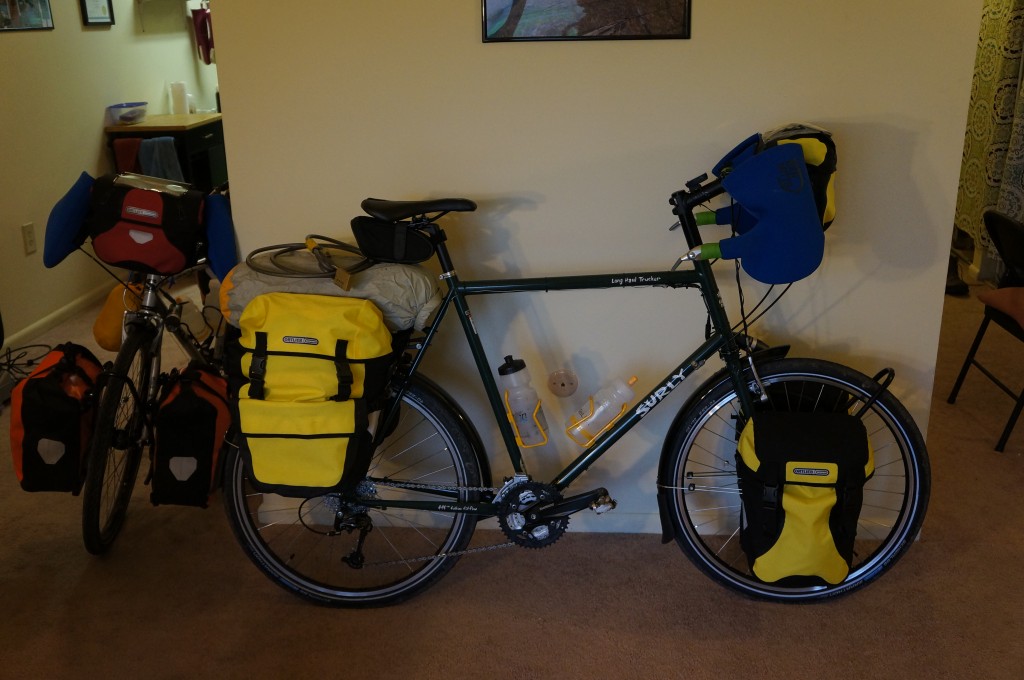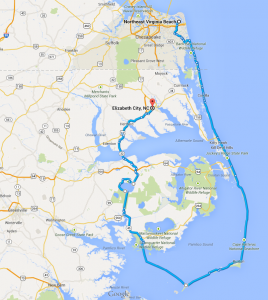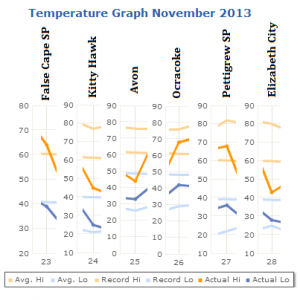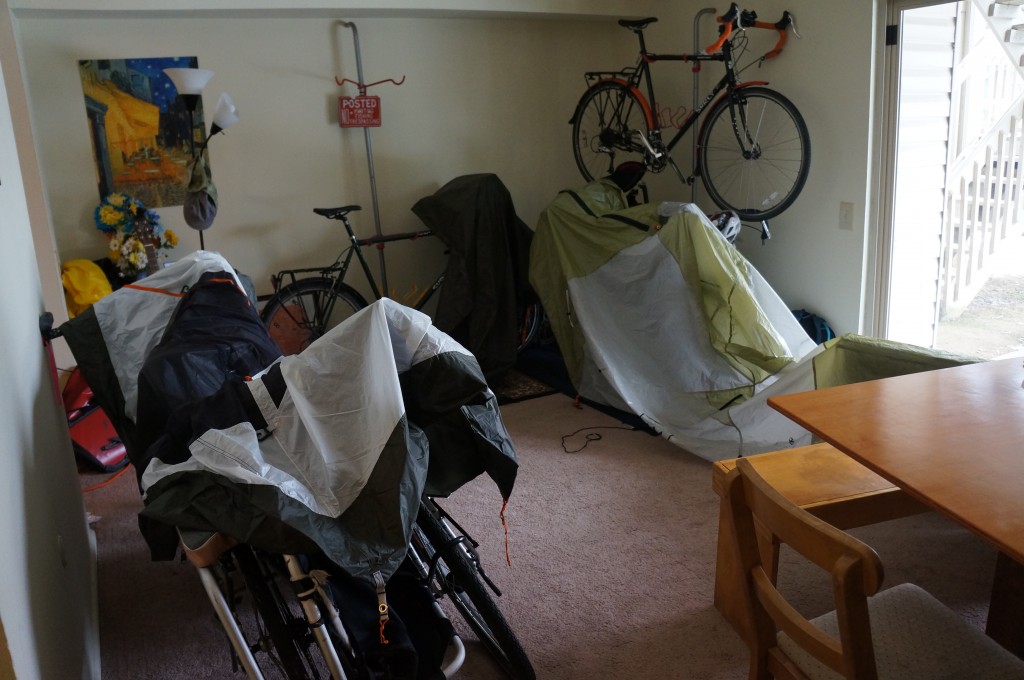This is the first in a series of posts about specific gear that we plan to bring on our trip.
We’ll be camping many nights on our upcoming trip. For that reason, it is important to be comfortable while in our tent – whether the conditions are cold or hot, wet or dry. Once you’re on the road long enough, you will hit all conditions, including those most unpleasant. Let’s take a look at the gear we’ll bring.
Tent – Having a good quality tent is a must for comfort. It must have low, waterproof fly for those days when it is pouring rain. The fly can be removed to provide more circulation in hot weather. Also, it is best to have enough space to relax in the tent. When you are caught in a bad rain, it is nice to pass the time playing cards. Finally, we like to have enough space under the fly but outside the tent to store bags and dirty shoes. We got our tent from REI (Quarter Dome T2 Plus).
Sleeping bags – We’ll be hitting some cool nights in Alaska – likely down near freezing. Warm sleeping bags are a must for a good night’s sleep! We considered buying silk liners for extra warmth, but decided we wouldn’t need it. We have 20°F (-7°C) bags, and will switch to 40°F (4°C) when we get to warmer climates. We got our warm bags from GoLite.
Sleeping pads – The big choice here is whether to go with foam or inflatable pads. (We did not consider for a second to not have a pad!) Foam pads are great because they can’t pop/deflate, but inflatable pads are great because they pack up into a smaller space. Both get you off the cold ground which is helpful. We’re planning to use our self-inflating open-cell foam pads (from Therm-a-Rest). We’ll probably pack a patch kit in case we puncture them. I have read about some folks taking both types of pads… maybe that is excessive?
Pillows – Are not necessary for short trips, but they are essential for long-term comfort. After weeks and months of sleeping in your tent, you don’t want to develop a neck or back ache from not having a pillow! I think pillows are are very personal, and a good fit will depend on your preferences. We decided to go with small inflatable ones, which have two different fabrics on the two sides – one better for hot conditions, and one for cold.
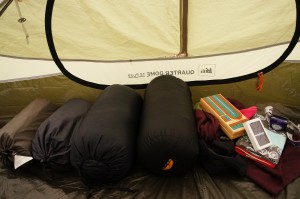
Sleeping bags and pads in their stuff sacks. Kindles, cards, and headlamps are often used in our tent, too!
Stuff sacks – Preferably waterproof, you’ll need bags to store each of these items in. Usually they come with each item you buy. Don’t lose them! Without the bags, your supplies will never pack down into small places. Compression bags are also great for clothing, but we’ll get into that in another post.
And last, but not least…
Bear spray – This isn’t necessary for physical comfort, but in bear-prone areas, think of it as your cuddle buddy for sweet, unworried dreams. This is best used when touring solo!
